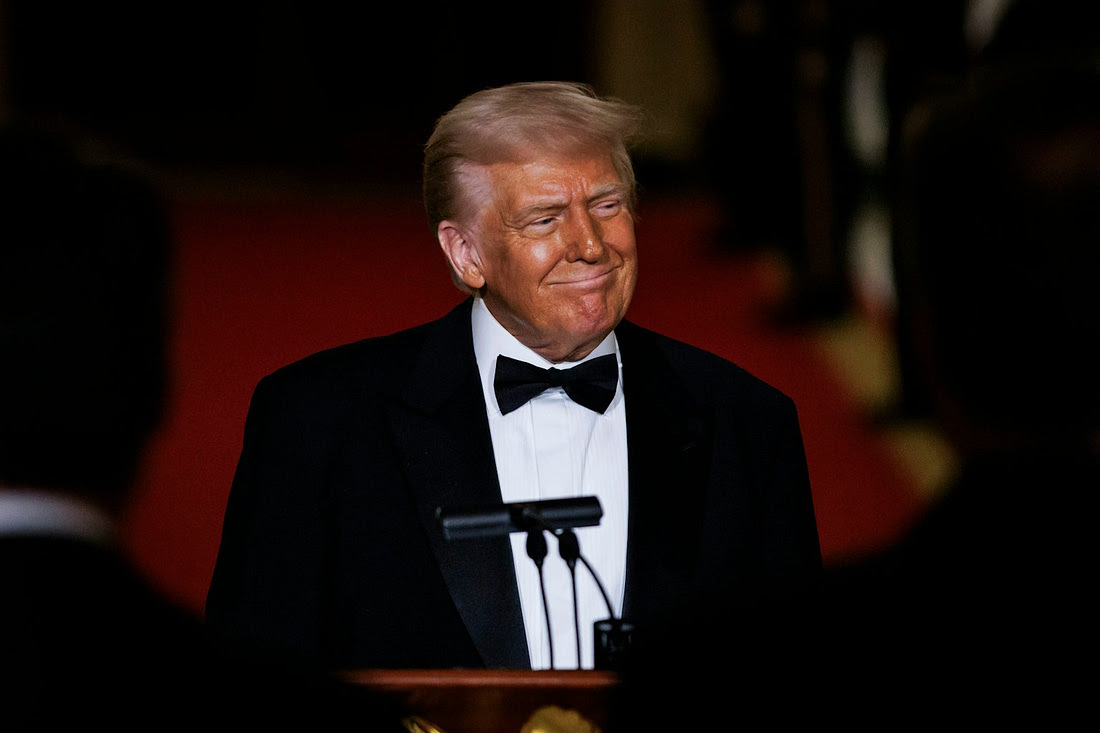During his first term in office, Trump had one major achievement: he responded to the pandemic by authorizing the rapid funding of a vaccine for COVID. His project was called operation Warp Speed. It was the domestic and peaceful equivalent of the Manhattan Project. It was a resounding success. Millions of lives were saved.
Unfortunately, Trump’s Health Secretary is opposed to vaccines. He has spent years encouraging people not to trust vaccines. He recently cancelled $500 million in vaccine research, cancelling research on exactly the kinds of mRNA vaccines that protected people from COVID.
Michael R. Bloomberg is a billionaire who has funded medical research at his Alma mater, John’s Hopkins University, and elsewhere. He is as devoted to promoting public health as RFK Jr. is to undermining it. Mr. Bloomberg was mayor of NYC for 12 years. In this post, he cleverly pits Trump’s ego against one of his worst Cabinet choices.
For leaders in business, failing to learn the lessons of a crisis can be disastrous. For leaders in government, when millions of lives are at risk, such disasters can be catastrophic. Unfortunately, that’s where the US is heading, thanks to the disagreement that Robert F. Kennedy Jr. has with his boss, President Donald Trump.
A little history: On Jan. 10, 2020, a Chinese scientist posted the genetic sequence of a “mystery virus” that had sickened dozens and caused at least one death. Forty-two days later, as Covid-19 spread across the globe, researchers near Boston sent the first shipment of an experimental vaccine to US regulators. Three months after that, Trump announced Operation Warp Speed, an $18 billion effort to accelerate the development, approval and distribution of vaccines.
Within a year, billions of vaccine doses had been administered worldwide — saving millions of lives, including those of many Americans. As Trump said: “Operation Warp Speed, whether you’re a Democrat or a Republican, was one of the most incredible things ever done in this country.” He was absolutely correct — but his health secretary disagrees. The question is: Will Trump allow Kennedy to destroy his legacy?
Kennedy recently canceled $500 million in contracts for the research and development of so-called messenger RNA vaccines. His defense — that mRNA technology is ineffective against respiratory infections — is wrong. Jay Bhattacharya, director of the National Institutes of Health, must know that, so he subsequently offered a different defense: There is insufficient public confidence in it.
Bhattacharya didn’t mention, of course, that Kennedy has fueled that public distrust. Regardless, the correct response to misperceptions about lifesaving medicine is not to throw up one’s hands, cancel funding for it and walk away. It’s to use the power of the bully pulpit to bring people together — community, faith, civic and other leaders — to spread facts and overcome hesitations. That’s leadership.
Not content to peddle misinformation and halt existing projects, Kennedy also effectively terminated additional federal funding for research on mRNA vaccines. The two edicts put countless American lives at risk.
To see the scale of the danger Kennedy is creating, it helps to understand how revolutionary mRNA vaccines are. For many decades, traditional vaccines have injected a small part of a dead or weakened virus into a healthy person. This stimulates the immune system to create antibodies, which protect people from serious infection when they encounter the real thing. In some cases, millions of chicken eggs are used to develop and produce these traditional vaccines, by incubating the viruses. In other cases, cell cultures are grown in bioreactors. Both processes are complex and time-consuming.
New mRNA vaccines are faster to develop. Messenger RNA is a strand of genetic code that gives cells instructions. For decades, scientists worked to design a synthetic form of mRNA, which would then tell the body to fight specific infections. Such a discovery, in theory, would also enable drugmakers to manufacture a vaccine without using a virus, cutting months off development. Yet despite significant advances, an mRNA vaccine had never been produced or tested at scale.
Operation Warp Speed helped overcome the obstacles and produce vaccines in record time. The speed of this breakthrough led to fantastical theories, including that the shots change one’s DNA, insert microchips into the body and cause infertility. It was all nonsense — the ultimate fake news. But it spread nonetheless, amplified by skeptics like Kennedy. Countless studies proved the vaccines safe, and the two scientists behind their development won the Nobel Prize.
The misinformation couldn’t be contained, but Kennedy can be. All that’s needed is a call from the White House directing him to reverse his recent decisions. Otherwise, when the next pandemic strikes, other countries — including China — will be equipped to distribute a shot within weeks, while scientists in the US will be left to fiddle with outdated technology as Americans wait in line.
Senator Bill Cassidy, whose vote was critical for Kennedy’s confirmation, lamented last week that the secretary has “conceded to China an important technology” and is imperiling the administration’s goals. He’s right — yet Cassidy and his colleagues in Congress have stood aside while Kennedy puts American lives at risk.
Without government leadership, the private sector is unlikely to fill the funding gap. Research on treatments for a hypothetical pandemic is financially risky, so public funding is essential to saving lives.
Kennedy’s actions will also have a chilling effect on other potential mRNA developments, including work on Type 1 diabetes, HIV, genetic diseases and myriad other illnesses, especially cancer. That bears repeating: mRNA research could lead to a cure for cancer. How many Americans who have family members suffering from cancer are ready to sacrifice them to Kennedy’s dunderheaded paranoias?
The White House should remember and celebrate its extraordinary first-term success — and build on it by reining in Kennedy. If it does that, the president who sped the development of the Covid vaccine might go down in history as doing the same for a cure for cancer and other diseases.


